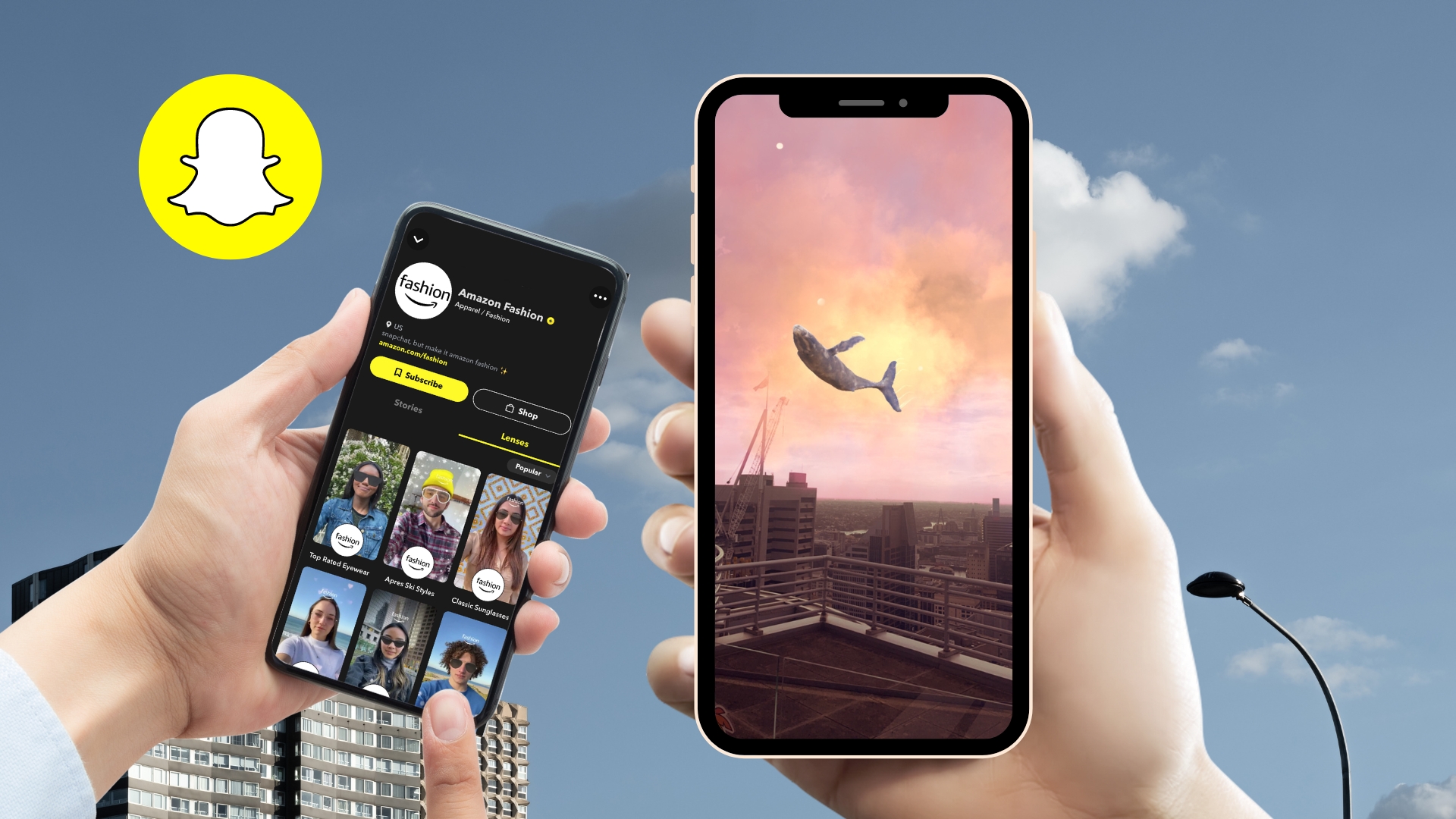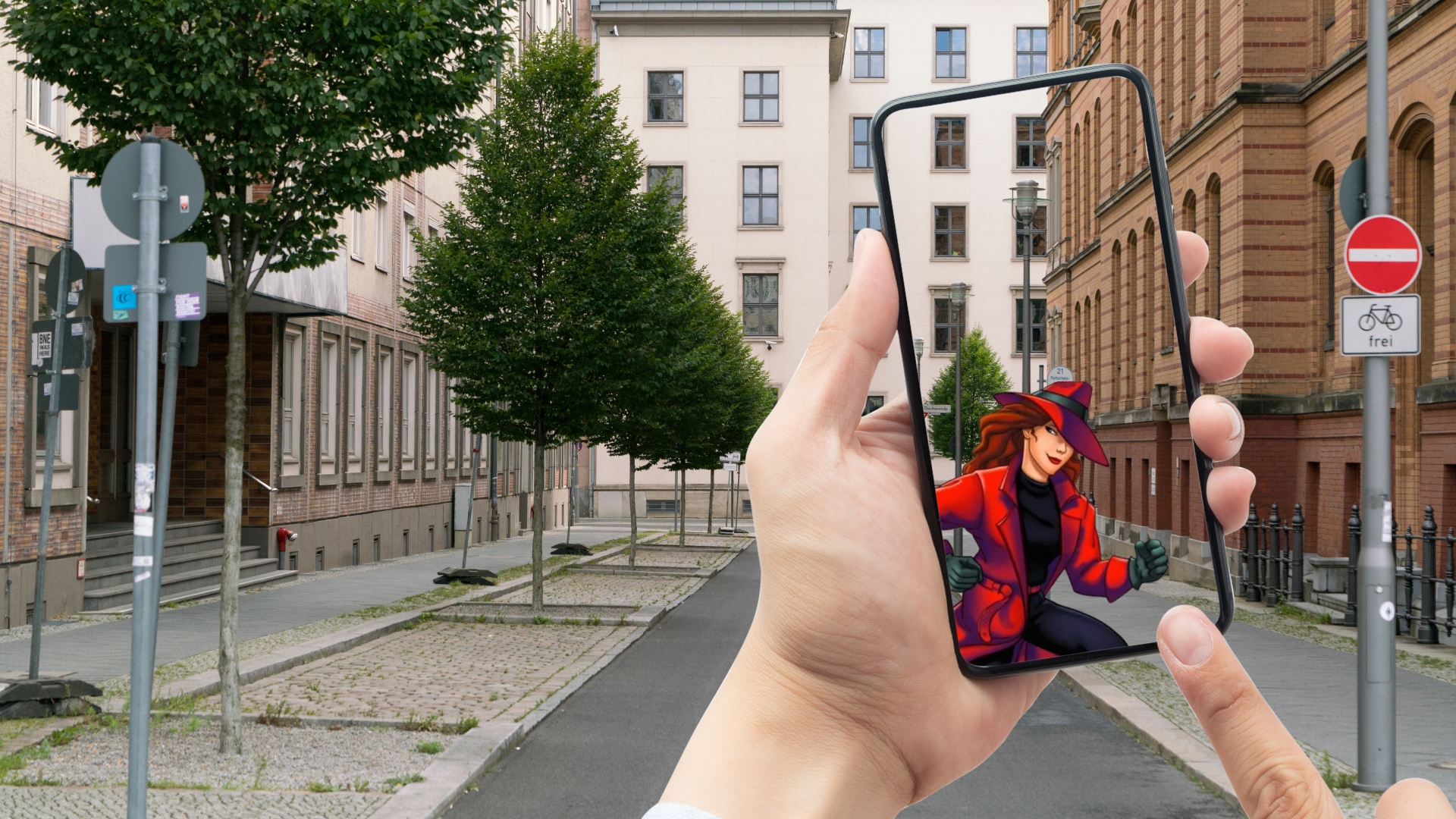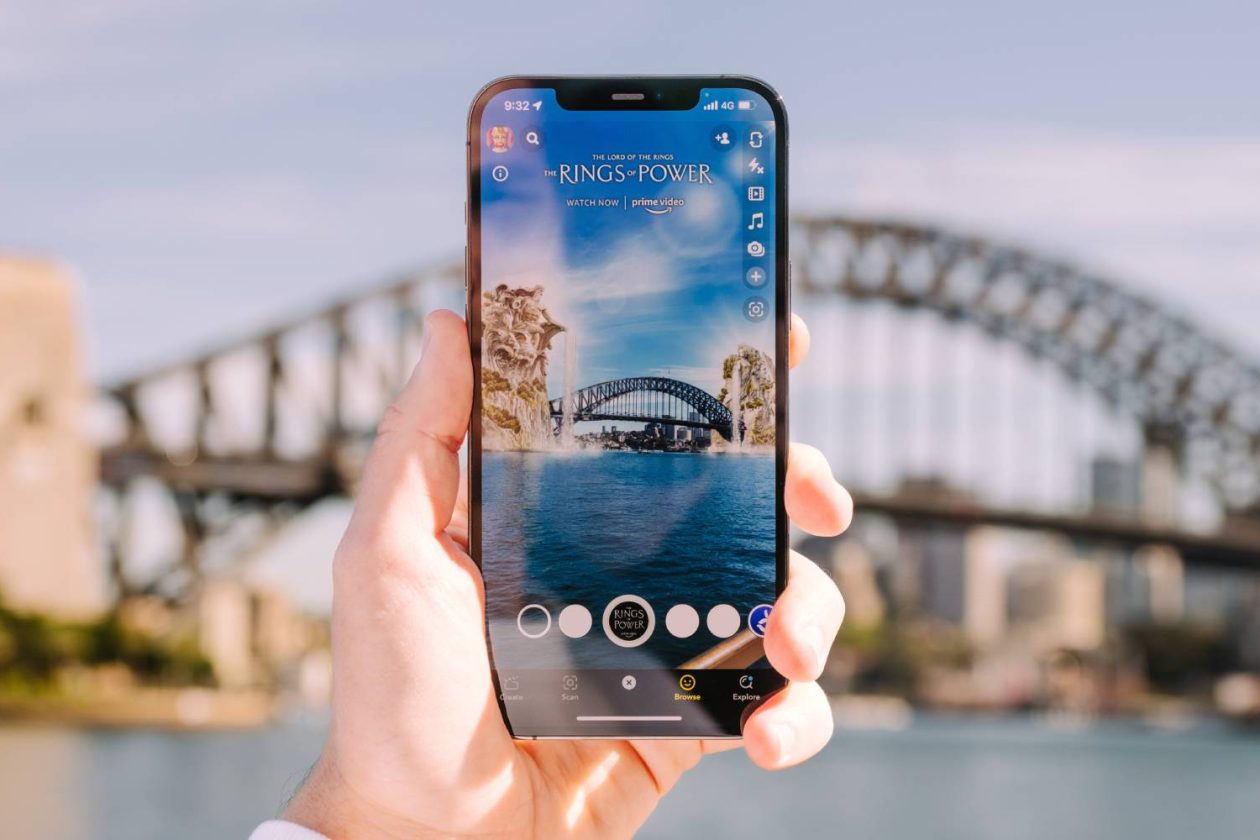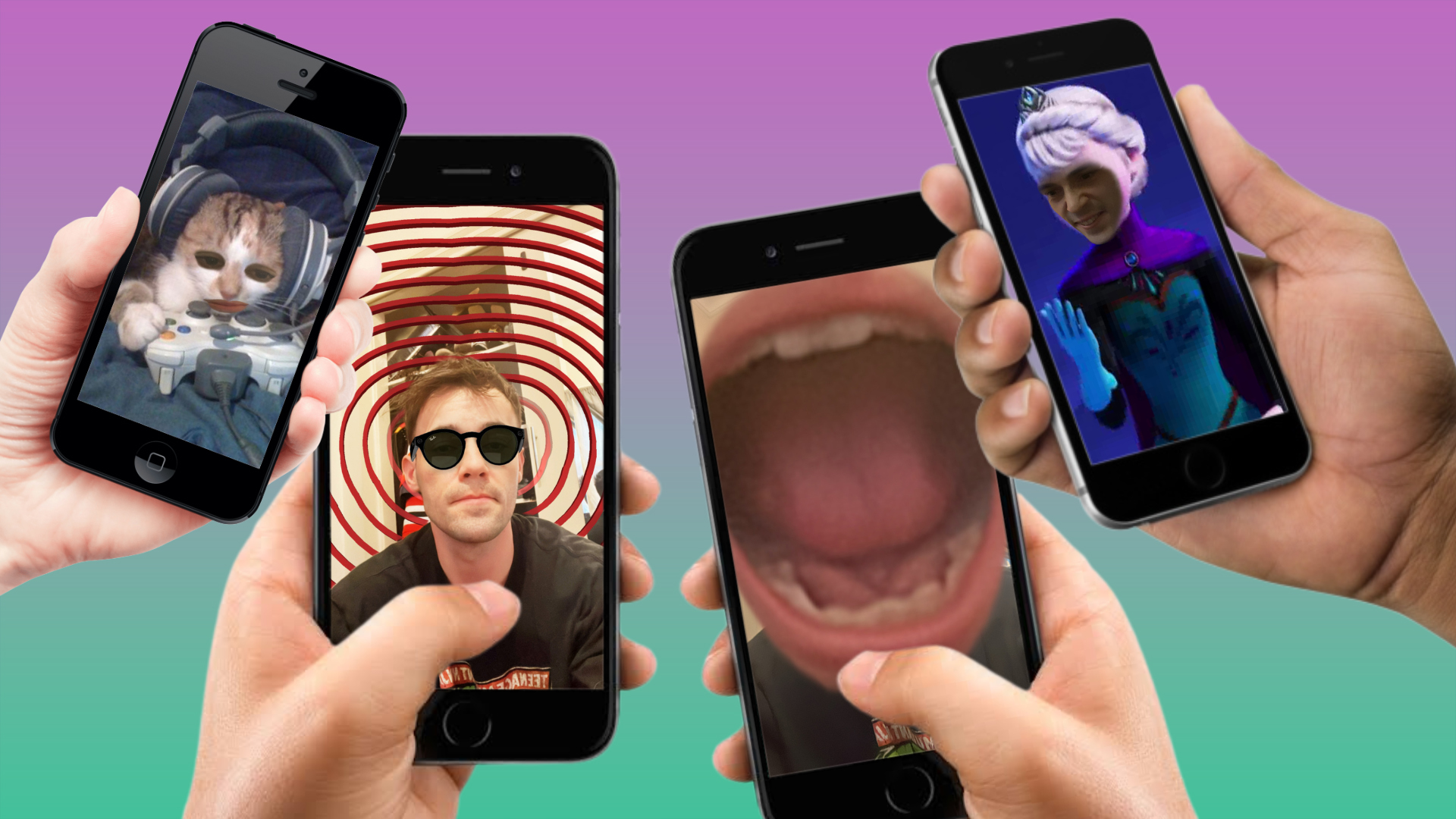Snapchat's new AR plans include revolutionizing shopping, one outfit at a time
New plans include fashion, friendship and... sky whales

“How do we support friendships?” asks Kathryn Carter, APAC General Manager for Snap Inc – the company behind social media app Snapchat – at a recent Summer Showcase for the platform held in Sydney.
It’s the question that’s driving Snap’s mission as a company in the coming months, and the plans include ambitions for changing the way we shop, discover new content and experience the world around us. And, it turns out, Snapchat has already taken successful steps in its aspirations to change its users’ lives – with exciting new collaborations set to reinforce this further in future and potentially grow beyond even the boundaries of its own platform.
How? The answer is a newly developed augmented reality (AR) software package called Camera Kit. This proprietary cross-platform software provides tools to brands, businesses and content creators to integrate Snap’s camera technologies and lenses into their own web and mobile assets. The hope is that this will offer users and shoppers new ways to interact with businesses and content creators, thus opening up opportunities for consumers to build relationships with the brands and content they love.
Most of us have probably already experienced AR in some form or another, but in order to understand how it’s set to change the way we view the world around us in the future, it’s first necessary to understand what augmented reality is and how it differs from its better-known sibling, virtual reality. Because as ambitious as Snap’s plans to change our lives might initially seem, in reality they fit seamlessly with what augmented reality as a technology seeks to offer.

What in the world is augmented reality?
Although often compared, the intentions and capabilities of AR are quite different from that of VR. Where virtual reality is designed to offer a new reality, augmented reality is designed to offer a different one – the former places users in new worlds, while the latter seeks to provide new ways to view the existing world.
One example of this is in a feature the team at Snap Inc demonstrated at the recent Summer Showcase event, where scanning a snap code activated a lens transforming the sky above into a vibrantly-colored landscape complete with a flying humpback whale emerging from the clouds.
While introducing sky whales into the mix might not offer any more value than as a novelty, more useful applications of similar AR lenses elsewhere include Snapchat’s collaboration earlier this year with Amazon Prime Video for the streaming service’s Lord of the Rings: Rings of Power series – which saw some of the series’ Middle Earth settings emerge from the waters surrounding Sydney’s famous Harbour Bridge.
Get daily insight, inspiration and deals in your inbox
Sign up for breaking news, reviews, opinion, top tech deals, and more.

It’s unclear if this application of AR alone would be enough to convince Snapchat users not already watching the series to tune in, but it’s nonetheless a demonstration of how Snap hopes to use AR as a way to elevate experiences we already have rather than offer entirely new ones.
And this also fits with what is Snapchat’s desired identity as a platform, as is its even more ambitious goal to dramatically change the way we engage with our favorite brands.
Seeing yourself in the future with AR
In addition to its sky whale, Snap also included a demonstration of an AR mirror at its recent Summer Showcase event in Sydney, a device that will allow users to enable an AR lens in order to visualize a product (or filter) on their reflections as a way to ‘try before buy’.
While a release of the AR mirror to consumers is (for now) not on the cards, the opportunities it offers are ones that Snap has been building within its platform itself.
Australian cosmetics retailer Mecca is one business to have already collaborated with Snapchat’s ambitions in this space, having launched a ‘dynamic shopping lens’ on the platform earlier this year allowing shoppers to visualize what products might look like when applied after purchase. Other high-profile brands to have developed similar AR lenses with the app include Dior, Puma and even Lego, while the latest to explore the possibilities of AR is fashion outlet H&M.
The newly announced collaboration between the fashion retailer and Snap introduces three new AR try-on experiences, while H&M has also taken advantage of Snap’s Camera Kit to build augmented reality capabilities into its own app.
It might appear niche but shouldn’t, with Snap’s AR technology already proving to have unique potentials for businesses. In a joint study with media intelligence company IPG Magna, for example, Snap research found that brands including AR in their marketing strategies saw a 6% increase in purchase intent from consumers as well as an identical 6% increase in brand preference.
And rewards for shoppers could be even greater, perhaps especially for women long taken for granted by a stagnant fashion industry. According to a recent survey by fashion app Mys Tyler, as many as 50% of women report finding that clothes they’ve purchased looked significantly different on them than they had on models, with 90% of women suggesting that they fail to feel represented by fashion models and runway shows.
For online shopping, which grew out of necessity during the Covid pandemic, there has never been an effective alternative to the physical dressing room – until now. And Snapchat seems to understand that thinking laterally about how it can fulfil its goal to become the ‘friendship platform’ could benefit its users.
The 'friendship platform'

If numbers are any indication, Snap’s recognition of the exciting opportunities offered by AR has already paid off for it as a platform, having grown exponentially in recent years. In the results for 2022’s third financial quarter, Snapchat reported daily average users of the platform having grown to 363 million, both a YoY increase of 19% and a growth of 31 million from the start of 2022. And AR has led the charge, with Snapchat also declaring that an average of 250 million users engage with the platform’s AR features on a daily basis.
While these figures are impressive, it’s clear Snap has learnt to harness what really works for it, unlike some other social media platforms lately. And that’s evident in the fact that you might already have experienced the rewards of Snap’s friendship vision yourself. If you’ve used an app recently to send a picture to a friend with a silly filter applied for example, such as one giving you dog ears or casting you as Elsa from Disney’s Frozen, you have experienced augmented reality.
And in doing so you will have inadvertently taken part in Snapchat’s ambitious vision for a friendlier future. When consumers will be able to take full advantage of the likes of Snap’s new AR mirror and the full extent of its AR plans is as yet unconfirmed, but hopefully a smoother online shopping experience – and more sky whales – aren’t too far off.

James is a senior journalist with the TechRadar Australia team, covering news, analysis and reviews in the worlds of tech and the web with a particular focus on smartphones, TVs and home entertainment, AR/VR, gaming and digital behaviour trends. He has worked for over six years in broadcast, digital and print journalism in Australia and also spent time as a nationally recognised academic specialising in social and digital behaviour trends. In his spare time, he can typically be found bouncing between one of a number of gaming platforms or watching anything horror.